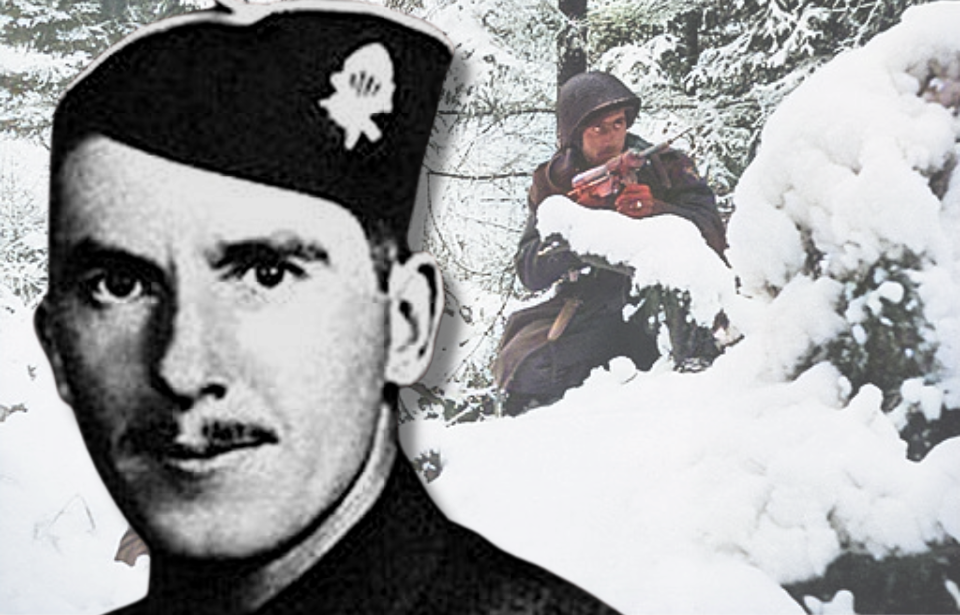On September 5, 1945, Leonard Funk Jr. reached an important milestone by being awarded the Medal of Honor, the highest military distinction in the United States. This esteemed recognition was granted in acknowledgment of his extraordinary bravery during a crucial battle against a large contingent of German forces earlier that year, a battle he successfully led.
In addition to the Medal of Honor, Funk, a paratrooper in the 82nd Airborne Division, received the Distinguished Service Cross, the Silver Star, the Bronze Star, and three Purple Hearts for his exemplary service. This impressive collection of awards cemented Funk’s legacy as one of the most highly decorated American soldiers of World War II.
Leonard Funk’s entry into the US Army
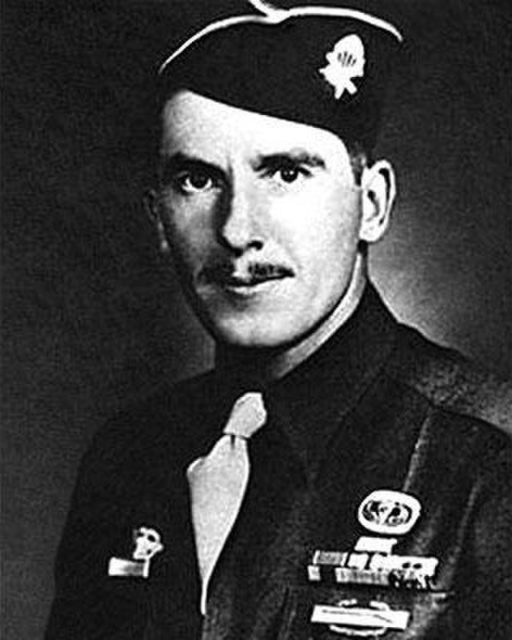
Leonard Alfred Funk, Jr. was born on August 27, 1916, in Braddock Township, Pennsylvania, and grew up near Pittsburgh. At the age of 24, just months before the Japanese attack on Pearl Harbor, he enlisted in the US Army.
In 1942, Funk volunteered for the paratrooper program, underwent training and was assigned to Company C, 1st Battalion, 508th Parachute Infantry Regiment, stationed at Camp Blanding, Florida. In 1943, he was deployed to England in preparation for the D-Day landings, becoming part of the esteemed 82nd Airborne Division.
Throughout his service as a paratrooper, Funk played a crucial role in some of the Allies’ most significant battles.
Leonard Funk in action
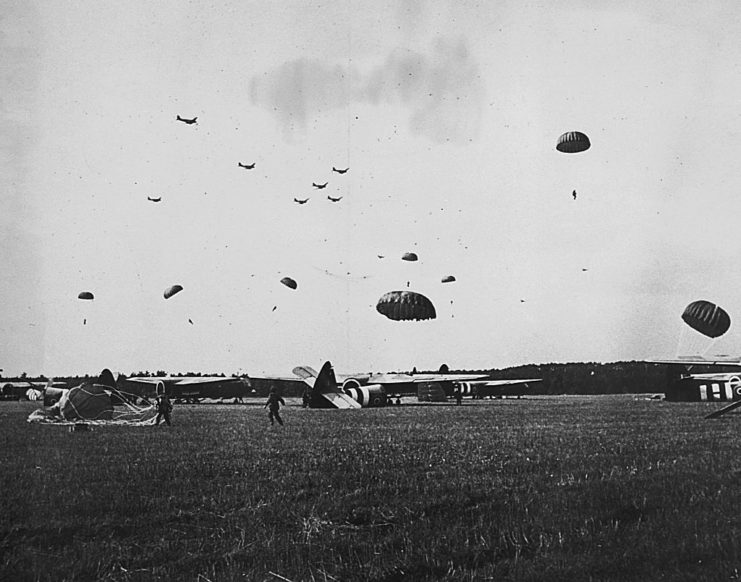
Leonard Funk’s first taste of combat came on June 6, 1944: D-Day. He was in command of a small unit that landed nearly 40 miles inland. After fighting for several days, he and his men managed to break through the German lines and link up with their fellow paratroopers. Miraculously, all of them survived. For his part, Funk received the Silver Star.
After D-Day, the paratrooper’s next major action was his involvement in Operation Market Garden, in September 1944. During the offensive, he led a three-man patrol against a battery of German anti-aircraft guns. He led the assault on the battery, killing 20 members of the gun crew and wounding a number of others.
It’s widely believed that Funk’s efforts during Operation Market Garden saved the lives of hundreds of Allied soldiers. He was awarded the Distinguished Service Cross for his “initiative, outstanding bravery, and strong personal leadership despite overwhelming enemy superiority in both numbers and firepower.”
After this came the Battle of the Bulge, for which he earned the Medal of Honor.
Bravery during the Battle of the Bulge
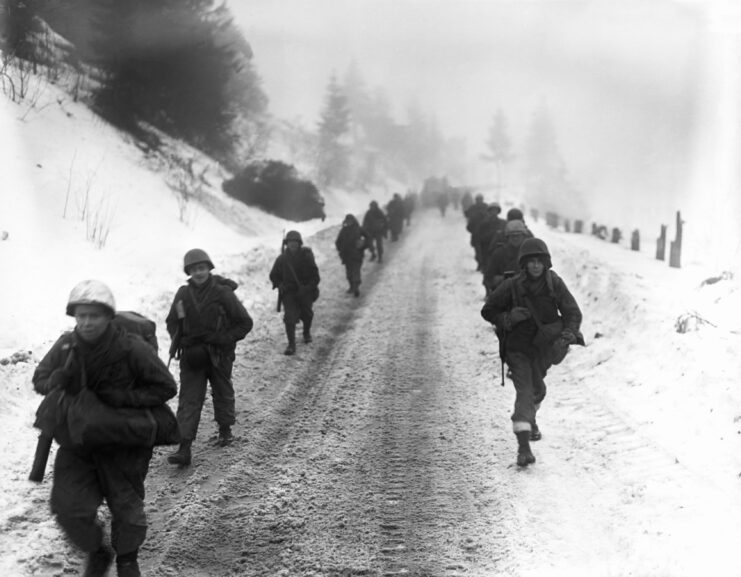
By January 29, 1945, Leonard Funk and his unit had been entrenched in a fierce battle against the Germans for weeks. Despite the intense fighting, they managed to advance 15 miles. This maneuver positioned them to launch an attack on the town of Holzheim, which was occupied by the German Army.
Funk, now serving as the company’s executive officer, recognized that his forces were insufficient to overcome the Germans. Nonetheless, he took charge and reinforced his unit with a platoon of clerks who were typically noncombatants. Under a relentless barrage of machine gun and artillery fire, this makeshift group attacked the town. Remarkably, they managed to clear 15 houses without suffering any casualties. Another American unit then joined the fray, enabling them to secure the town under Allied control.
Funk was awarded the Medal of Honor
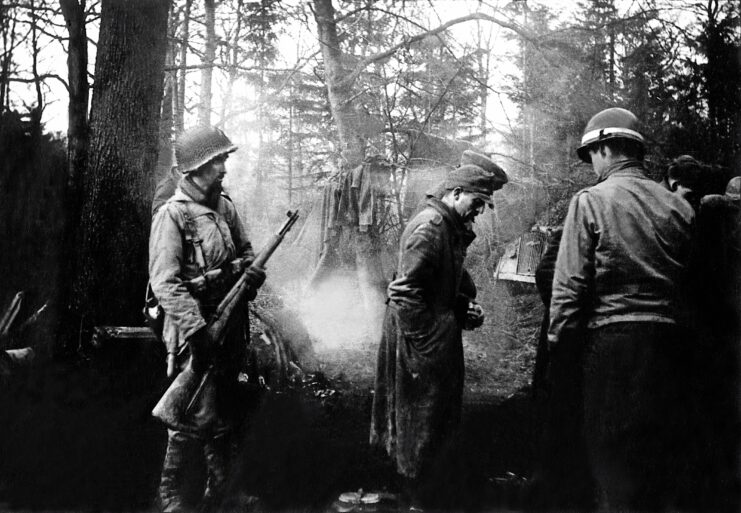
Eighty Germans were captured and placed under guard by four troops, while the rest of the US soldiers doubled back to ensure the town was completely empty of Germans. While this was happening, the four guards became overpowered by their prisoners, who immediately started making preparations to attack the Americans.
Funk returned around this time and walked straight into the group, who were no longer his prisoners of war. A German officer pointed a loaded weapon at the paratrooper and demanded he surrender. Pretending to obey, Funk lowered his submachine gun. However, in a flash, he pulled the trigger and mowed down the officer and a number of others.
He screamed for his unit to disarm the rest, leading to the deaths of 21 German soldiers, while the rest were captured in mere moments. On September 5, 1945, Funk was awarded the Medal of Honor by President Harry S. Truman. With his assortment of wartime medals, he is one of the most decorated paratroopers of World War II.
Leonard Funk’s post-service life
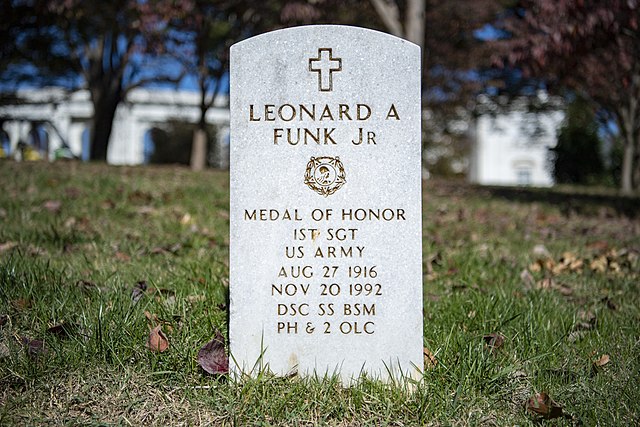
After leaving the Army, Leonard Funk continued working with soldiers, focusing his energy on the Veteran’s Administration in the Pittsburgh area before retiring in 1972. During this time, he and his wife, Gertrude, had two daughters.
Want War History Online‘s content sent directly to your inbox? Sign up for our newsletter here!
On November 20, 1992, the war hero passed away at the age of 76 and was buried at Arlington National Cemetery. Three years later, a section of road where he lived was renamed in his honor. In 2008, he was inducted into the 82nd Airborne Division’s Hall of Fame.
